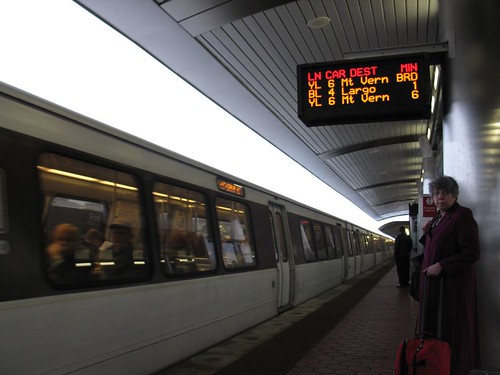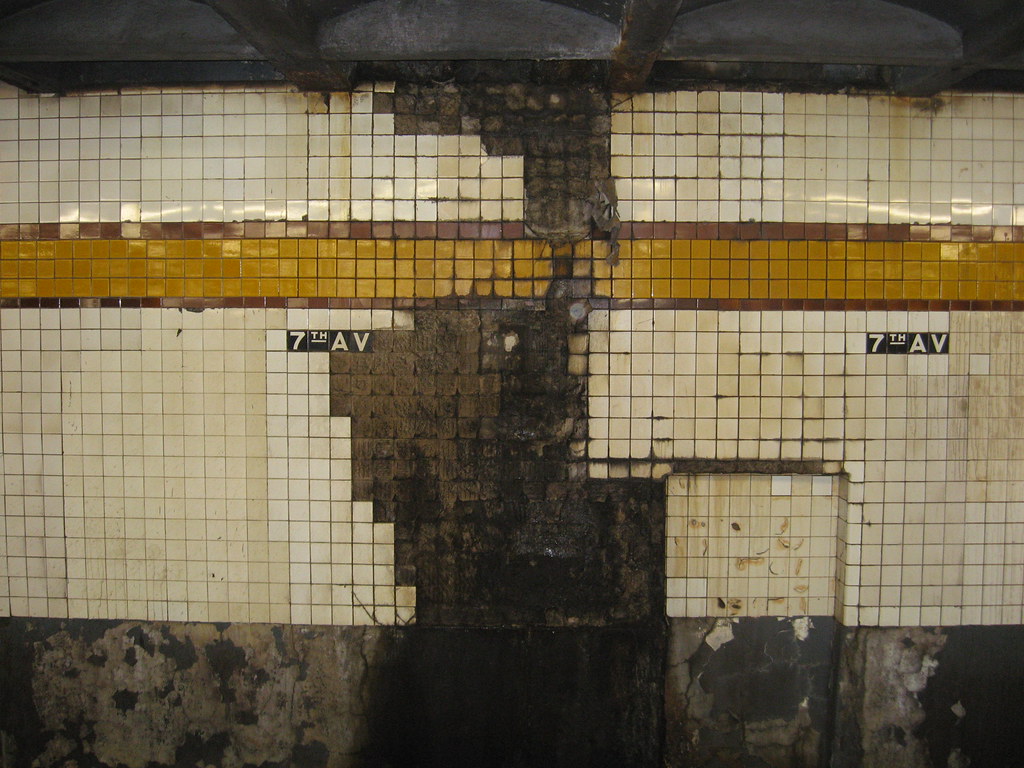Other cities have enjoyed train arrival boards for years. (Photo by flickr user NYCArthur)
When the MTA first proposed bringing train arrival boards into its system, the original target date for an A Division — that’s the IRT numbered lines in NYC Transit lingo — roll-out was 2006. As I reported last year, the MTA had since pushed back that date to 2011 for a delay of five years. In the latest Q-and-A sections about the 2010-2014 Capital Program, the MTA confirmed that the train arrival boards will make their A Division debuts in 2011 as long as the current schedule holds.
While an on-time date one year later is good news, the surprising development to many riders is that many of the components are already in place. Take a walk around many of the IRT stations — Bergen St. and Grand Army Plaza near me in Brooklyn come to mind — and wrapped LCD signs dangle from the ceilings. Those signs will, in around 14 months, usher in a new age of technology for the MTA.
To implement the countdown clocks, as the Q-and-A (pdf) says, the transit authority must implement a two-tiered technology structure. First, either Communications-Based Train Control, a state-of-the-art technology not loved by unions, or Automatic Train Supervision, a simple enhancement to the current system, must be brought online to “identify the location of trains.” Then, Public Address and Customer Information Screens must be installed in every station. This PA/CIS system broadcasts those annoying digital audio announcements currently heard on the L line and display the countdown clocks and other pertinent information.
Already in place along the Canarsie Line, all of the A Divisions except the Flushing Line — so the 1, 2, 3, 4, 5, and 6 but not the 7 — are equipped with an ATS system. That installation cost $213 million and was covered by the current 2005-2009 capital campaign. Currently, the MTA is working to install the PA/CIS system, and as I mentioned above, many stations are already equipped with the digital signs. The final cost of this part of the project will be $171 million, and it should be online by December 2010. But the MTA document says it is “subject to the successful resolution of contractual issues.” That’s a big red flag.
Once the major installation projects are complete, Transit will begin using the technology right away on all but the White Plains Road (2/5) and the Dyre Avenue (5) Lines in the Bronx. The White Plains Road boards will come online in November 2011 when signal modernization is complete. Dyre Avenue passengers won’t enjoy this technology until 2016.
So that’s the good news. There is, of course, some not-so-good news. The Flushing Line will not enjoy train arrival boards until 2016 when the CBTC work and the PA/CIS upgrade are completed.
The B Division lines — all of the lettered trains — are even less likely to see this technology. The 2010-2014 Capital Plan budgets $25 million for “design/piloting of an ATS system for monitoring trains.” The report continues, “Full rollout on the entire B-Division will cost approximately $175 million, with the balance of the cost to be funded in 2015-19.” In other words, these lines may receive countdown clocks in a decade from now. The MTA has, however, included $46 million to equip the final 43 stations that have no public address systems at all.
Despite the slow roll-out, this is progress for the MTA. They have a concrete plan to bring this countdown clock technology to the system. It will, however, be online throughout the system nearly two decades after London and Washington, D.C. began using it. While the system allows for real-time train location data to be broadcast online, it is unclear if the MTA will take the technological leap of making that information available to the public.
In the end, Michael Grynbaum’s Times article on this topic says it best. Transit advocates are indeed skeptical about “whether this system would be sufficient.” I’ll let Andrew Albert, head of the NYC Transit Riders Council, have the last word. He said to Grynbaum, “It would be even more useful if they install a repeater on the street, so people can have time to get a cup of coffee or a newspaper.” Or just walk home.


